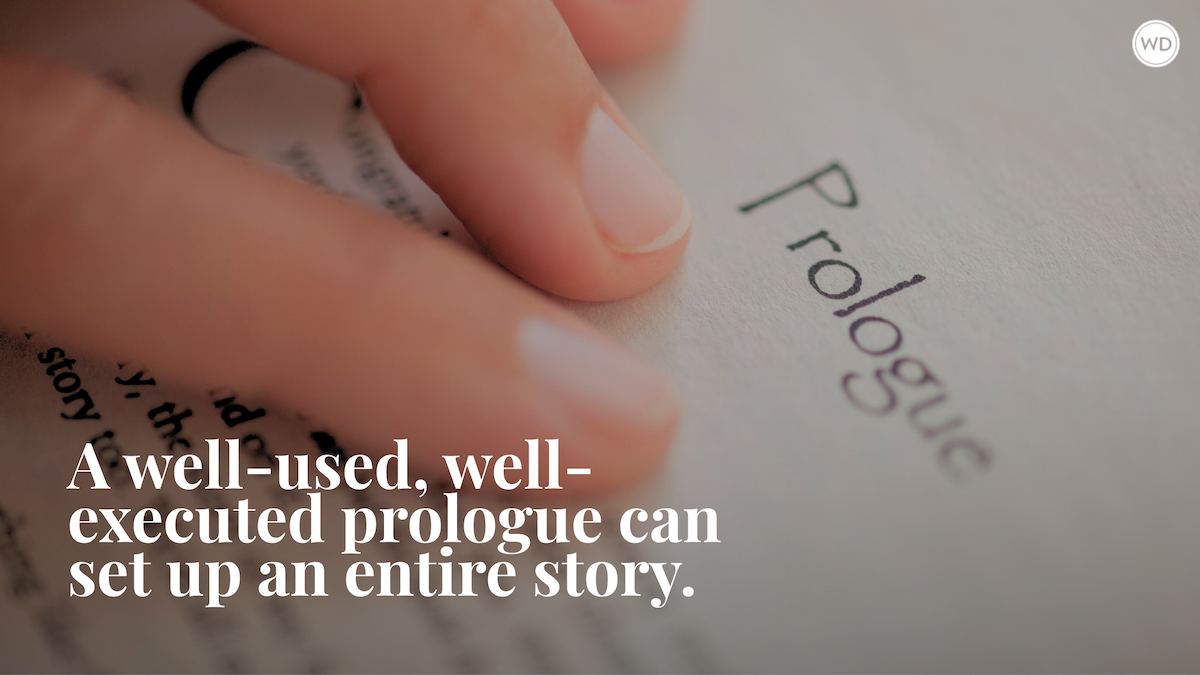Where To Carry a Weapon (FightWrite™)
This month, trained fight and author Carla Hoch shares where your character should carry their weapon, and why film and TV is obsessed with swords across a character’s back.
In the last post with FightWrite™ on the WD blog, we looked at writing characters who wield two swords. At the end of the post, I wrote that if your character carries a sword on their back like Deadpool or Michonne from “The Walking Dead,” you should stop writing. In this post, we will look at where to carry any weapon, considerations for carrying a sword on the back, and what Deadpool and Michonne are doing wrong. Lastly, we will look at why in movies we see so many characters with swords on their backs.
Carrying a Sword
Before we get into the ins and outs of carrying a sword on the back, let’s consider carrying a sword in general. There are three things that impact where we carry any weapon: convenience, custom, count. Each of these can determine not only where a weapon might be carried but how it is carried in a particular location.
Convenience
In order to protect yourself with a weapon, you have to be able to access that weapon easily. The weapon also must be positioned in a way that allows for its proper use. Here is what I mean.
If your character carries gun as their primary form of protection, they wouldn’t want to keep that gun on their leg under their pants*. Why? Well, when a bad guy jumps out, your character would have to fight off the villain, lean down, hitch up their pant leg, unsnap the gun from the holster, then draw it. Unless the villain allows the hero to call time-out, that villain will not allow the hero to grab that gun.
That is why every professional who carries a gun as part of their job keeps the weapon on their chest, hip, or, sometimes, lower back, if the weapon must be more concealed. These people have to be able to access their weapon easily and each of those locations allow for that. And, in all cases, they will carry the gun with the handle toward the wielding hand in a way that allows for a natural grip.
The same can be said of swords. They were carried in a place that allowed for a convenient, smooth wield. Sometimes that was the side, sometimes that was the back. In some cases, it was straight across the belly. In all places, the handle was easily accessible and positioned for a functional grip.
Custom
Though weapons were created for protection, custom could dictate where they were/are carried. Historically, left-handed folks were not lauded. In several languages, words meaning sinister, stingy, and just plain wrong-sided are derived from that language’s word for left. In the time of swords, if you were left-handed, you learned to function right-handed and you kept your “southpawness” a secret.
The common cultural practice of functioning right-handed is why swords were often carried on the left hip. Does that mean swords were always wielded with the right hand? No. The French created a parrying sword specifically for the left hand. It was meant to be used in tandem with a sword in the right hand. The name of that sword was main gauche – the French term for left-handed. Main gauche also means “unsophisticated hand.” (See what I mean? Southpaws, historically, didn’t get no respect!) If your work is historical and there are swords, research the use of the left hand in wielding.
You also should research when a sword was carried edge up or down. The blade is the metal portion of a sword or knife. The edge is the sharpened portion of the blade. Certain dress could dictate the direction of the edge. And the angle the wearer positioned the entire blade when passing others could be impacted by their social ranking. If you are high status, you might not point your sheathed sword down when you passed others. It would be everyone else’s job to concede to your rank and get out of your way.
Count
The number of weapons carried also determines where each is located. *Remember when we looked at how inconvenient it is to have a gun on the leg? That only applies when that gun is the primary weapon. If the gun is a secondary or tertiary weapon, being on the leg is fine. The idea is that the gun on the leg will be used when the most accessible weapon isn’t available or functional.
Historically, edged weapons on the body were a bit like mice: If you saw one, there were bound to be more. Swords were not the best weapon for every task. Sometimes a knife or sword of different length was needed. Also, swords could be broken or dropped. In those cases, the warrior needed a back-up weapon. And, sometimes, that back-up weapon might have been on their back.
Carrying the Sword on the Back: Appropriate
Now that we know about what impacts where swords were carried, let’s look at when swords were carried on the back. Any time a warrior found the back to the be the most convenient place for their sword, that’s where they carried it. If the sword was especially long or if the warrior would be climbing and moving a lot, carrying the sword on the back might have made the most sense.
Carrying the Sword on the Back: Not Appropriate
Running Out of Arm
Looking back at our two original characters in question, Deadpool and Michonne, the placement of their primary weapons wasn’t ideal. But far greater a sin than where they carried their weapons was how they did so. Each character carries their swords in a scabbard. That is the first problem we will look at.
A scabbard is meant to cover the entire blade of a sword. The length of a katana, which both characters carry, can be anywhere from 24–31 inches. When you draw a sword from a scabbard, you often hold the scabbard in place then pull the sword by the handle separating the two from each other. (By the way, scabbards and sheaths are the same thing. Scabbard is the word generally associated with longer blades like swords.)
Now imagine the scabbard is on your back. You reach back with your left hand and hold the sheath in place so it doesn’t ride up when you pull the sword. You reach up with your right hand for the handle which would be around five or more inches up from the blade. So, even if the blade is on the short side, say 24”, your hand will be around 29” from the tip. When you pull up on the katana, it is highly likely some of the blade will still be sheathed even at the greatest length of your reach. Yes, you will pull down on the sheath. But the way the scabbard is affixed to your back can’t be very mobile or the weight of the weapon will pull the whole thing down, out of your reach.
Put a tape measure at the base of your neck on your back. The scabbard would actually be lower, but let’s make it easy. Pull up on the tape measure with your hand sideways, as if holding the handle of a sword that is pointing down. Your reach won’t be as long as you think. If you are drawing sideways toward the edge of the shoulder, the reach is even shorter.
I have looked at Michonne’s sheath and the length of her weapon. Even standing at 5’7”, ain’t no way she is clearing that sword from the scabbard. If you can find an episode that shows her from the back wielding the weapon, reach out to me. I gotta see that for myself.
If you want your character to carry their primary sword on their back, it would be best to have the sword in a break-away scabbard. This type of scabbard grips the blade on one side and is open on the other side. This means the wielder doesn’t have to clear the length of the scabbard. Unfortunately, break-away scabbards aren’t viable for every type of sword.
Amazon
[WD uses affiliate links.]
Behold, All My Vital Organs
One of the biggest issues with carrying the primary sword on the back is what the drawing of it leaves exposed. When I reach my right hand to my left hip, I provide a small barrier to my vital organs. When I reach back over my shoulder for my weapon, I am exposing all of them: heart, lungs, guts, liver, all the things. That is a problem even if I am in armor. Armor is not impenetrable. Even if it is, in the time it takes you to pull your sword I could push kick you in the chest or whack you with a war hammer.
Why Do We See Swords on the Back on Screen?
So, if carrying a sword on the back is so fraught with peril, why do we see it so much on screen?
I reached out to my good friend and edged-weapons expert, Kirk McCune, for this question. Ready for the answer? Ladies and gentleman, here is why we so often see swords wielded from the back on screen: It looks super cool. Seriously, it is dynamic and dramatic. Movies and TV shows are, after all, entertainment.
And there you have it. Why your character might not want to carry a sword on the back. Can they? Sure. Should they? Maybe. The most important thing about where your character carries their weapon is your knowledge about that placement. By the way, in my Writer’s Digest book, Fight Write, I talk about why swords look the way they do. And they do look a certain way for a reason. In Fight Write, Round Two, my friend Kirk wrote several chapters on how to hold a sword and how to write the training of sword work. Give both of those books a gander.
Until the next round with FightWrite™ on the WD blog, get blood on your pages. And, hey! Reach out to me via the contact form on FightWrite.net and give me some post ideas. The best thing for me to write about is the thing you need to know.
Carla Hoch is the award-winning blogger of FightWrite® and author of the Writer’s Digest book Fight Write: How to Write Believable Fight Scenes. She is a WDU instructor who regularly teaches on the craft of writing fight scenes, action, and violence as well as the mechanics of fighting for writers. Carla is a world champion jiujitsu player and has experience in almost a dozen fighting styles. She lives and trains outside Houston, Texas.








